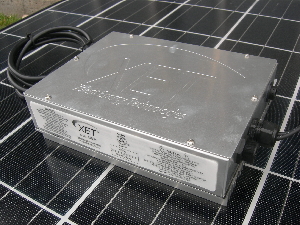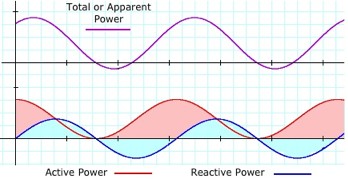 How home solar arrays can help to stabilize the grid, part 1 of 2May 25, 2010 - George Musser - scientificamerican.comEditor's Note: Scientific American's George Musser will be chronicling his experiences installing solar panels in Solar at Home (formerly 60-Second Solar). Read his introduction here and see all posts here.
We all know that solar power curtails carbon emissions, decentralizes the electrical system, and reduces the nation's reliance on foreign oil resources, but did you know that solar can now help to stabilize the grid? The grid is highly temperamental. It requires careful monitoring to maintain frequency and voltage within very limited ranges to ensure that motors don't burn out, that power surges don't zap computers, and so on. In the U.S. we take quality electricity for granted, but our good fortune comes with a huge infrastructure behind it to make sure it stays that way. When the grid does get destabilized, the results can be nasty. Blackouts on the West Coast in 1982 and 1996 forced six million people to eat by candlelight. The infamous 1977 New York blackout left deep scars on the city. The 2003 U.S.-Canadian blackout affected 60 million people. In 2004 a joint U.S.-Canadian Task Force compared these events and found that the principal factor common to all was that the demand for reactive power exceeded the supply. Few people have even heard of "reactive power." So what is it, who needs it, why wasn't it such a problem before, and how might solar help prevent future blackouts? We homeowners pay our utility bills based on "active power." It is also known as "real" power, partly because of a mathematical technicality and partly because it carries the kilowatt-hour energy that does the work of lighting our homes, compressing the fluids in our air-conditioners, and pumping water into our swimming pools. But simultaneously, alongside the active power, flows reactive power. It performs an ancillary service that ensures fluorescent lights actually do light, that computer power supplies actually do work, and compressor and pump motors actually do turn. Modern electronic wizardry, from LCD TVs to electric cars, worsens the reactive-power demand on the transmission lines -- so much so that the European Union and the U.S. government are beginning to force manufacturers to reduce significantly the reactive power draw of these devices.
The total power is measured in kilo-volt-amps (kVA), the active power in kilowatts (kW), and the reactive power in kilo-volt-amps-reactive (kVAr). The ratio of kW to kVA is called the power factor (pf). If pf equals 1, all of the kVA power is active power; if it equals 0, all of the kVA power is reactive power. Home energy monitors such as the TED 5000 display this quantity. Reactive power causes instabilities for two reasons:
In the next article, I will explain how a new solar technology, called microinverters, can help control the reactive power on the grid and help stabilize our electrical system. Photo and diagrams courtesy of Arnold Mckinley |
Updated: 2003/07/28
 Solar arrays can do more than feed energy into the power grid. They might also be able to help the grid cope with a problem many people aren't aware of: the fact that electrical appliances not only consume energy, but also momentarily store and release it. The worst culprits are motors and transformers, whose internal magnetic fields represent a significant cache of energy, giving these devices a type of electrical inertia that causes them to get out of sync with the grid. To describe the problem and a possible solution, I've invited a two-part guest blog from Arnold Mckinley of
Solar arrays can do more than feed energy into the power grid. They might also be able to help the grid cope with a problem many people aren't aware of: the fact that electrical appliances not only consume energy, but also momentarily store and release it. The worst culprits are motors and transformers, whose internal magnetic fields represent a significant cache of energy, giving these devices a type of electrical inertia that causes them to get out of sync with the grid. To describe the problem and a possible solution, I've invited a two-part guest blog from Arnold Mckinley of  Reactive power flows whenever the load on the grid cause the voltage and current, which oscillate at a
Reactive power flows whenever the load on the grid cause the voltage and current, which oscillate at a 